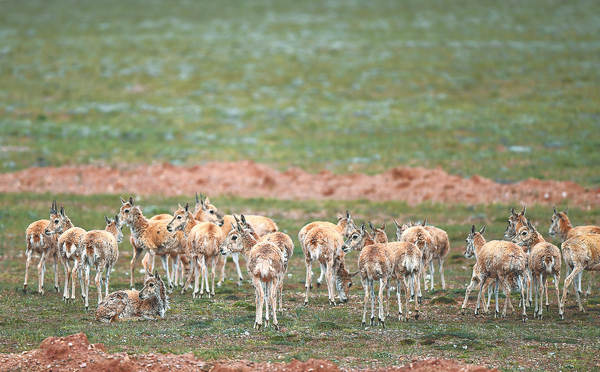More national parks urged to protect species


Experts have called for building more national parks to preserve wildlife and plant species as they have proved effective in protecting wildlife since the first five were established in 2021.
Zhang Zhengwang, a professor of bird conservation from Beijing Normal University, told the Second National Park Forum in Xining, Qinghai province, recently that 22 of the 64 pheasant species in China are facing severe threats to their survival, indicating a high proportion of endangered species. It is crucial to enhance protection and research efforts for these rare species by setting up more protected areas such as national parks.
The main threats include the loss of suitable habitats, illegal hunting, gene pollution caused by hybridization and the impact of bird flu and other diseases, he said.
"In recent years, we found that the conservation of pheasants has been successful, although the species are more active outside protected areas. Within the nature reserve areas, the species distribution density has been decreasing."
He suggested the establishment of more protected areas, especially national parks.
"Among the first five national parks, 30 pheasant species have been found, accounting for 40 percent of China's pheasant species. It means that the remaining 60 percent is yet to be included in national parks.
"It is hoped that the construction of national parks in the country can be stepped up, allowing for enhanced protection for pheasants and their habitats," he said.
In December, China identified 49 sites in 28 provinces where national parks could be established, the National Forestry and Grassland Administration said. China will complete the development of its national park system by 2035, when it will be the largest in the world in terms of coverage, biodiversity and public participation, the administration said.
In 2021, China announced its first five national parks including the Three-River-Source, Giant Panda, Northeast China Tiger and Leopard, Hainan Tropical Rainforest, and Wuyishan national parks. They have achieved positive results over the first couple of years, said officials and experts.
For example, Three-River-Source National Park in Qinghai province has achieved overall protection of the headwaters of the Yangtze, Yellow and Lancang rivers, the National Forestry and Grassland Administration said.
Chen Gang, secretary of the Qinghai Provincial Party Committee, told the forum that the estimated snow leopard population in the province has exceeded 1,200.As a top predator in the plateau food chain, the healthy survival of a snow leopard requires at least three to four hundred blue sheep in the lower food chain, which in turn requires at least 100 square kilometers of grassland.
"Behind the recovery of the snow leopard population lies the overall optimization of the natural ecosystem brought about by national park construction, which has had a profound impact on biodiversity conservation," he said.
"Previously, enterprises that came to invest in Qinghai were most interested in mineral resources. Now, companies are finding opportunities in environmental resources and green development," he said.
The changing mindset is driven by the profound transformation of comprehensive green development led by national park construction, he added.
Lyu Zhi, a professor from Peking University's School of Life Sciences, said that protecting flagship species such as the snow leopard preserves their habitats as well as other mammals and birds that live there.
Flagship species are more of a cultural and communication concept than a scientific one. The species usually attract more public attention and garner increased investment in protection.
The snow leopard inhabits the high-altitude regions of the entire Qinghai-Tibet Plateau while the giant panda, another flagship species, lives in the mountains of Southwest China next to it.
"The two flagship species inhabit areas that account for about 40 percent of the country's land area and a large number of other animals live in their habitat," she said.
The Giant Panda National Park, which covers over 70 percent of the animal's population, demonstrates one of the world's strongest conservation efforts, Lyu said.
- Chang'e 6 samples show moon's asymmetry
- Vice-premier calls for more efficient policy implementation
- Top political adviser urges sustained pairing assistance to Xinjiang
- Top legislator stresses high-quality legislative work
- Global representatives hail Shanghai's achievements
- National health body bans use of LVA surgery to treat Alzheimer's





































